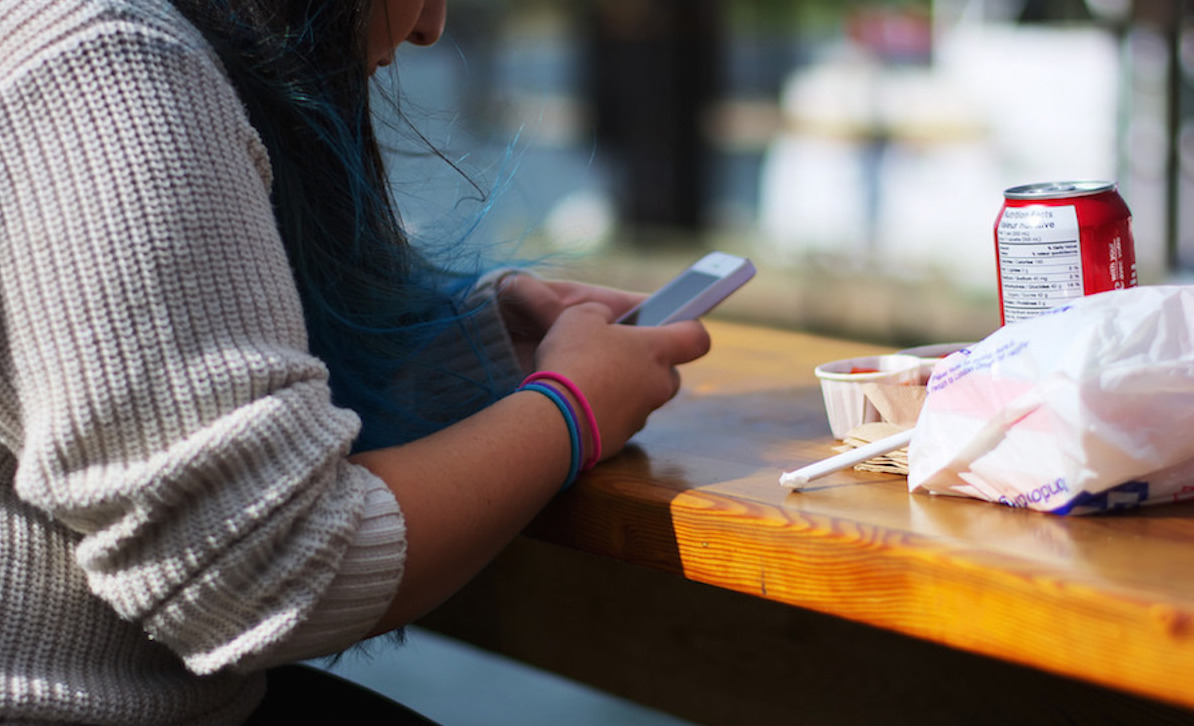
Talking to teens about social media
This article originally appeared on Remake Learning, one of Kidsburgh’s community partners. Remake Learning reports on the people, organizations and ideas shaping the future of teaching and learning in the greater Pittsburgh region.
Teenage girls at a high school in Berkeley, California, logged onto Instagram one day last year to find photos of themselves populating a so-called slut page. Their male peers had taken the liberty of uploading their photos and captioning them with derogatory and misogynistic phrases. The Instagram account was eventually deleted and the perpetrators were suspended, but not before the incident caused emotional trauma.
One thing is clear: The internet did not give birth to sexism. Or to teenage bullying. It’s easy to forget that a social network is simply the digital manifestation of dynamics that exist in daily offline life, as Dana Boyd described in her book, “It’s Complicated.” But social media certainly provides ample opportunities to take those dynamics to the extreme.
There’s been plenty of conversation about how traditional media, from magazines filled with Photoshopped models to unrealistic TV shows, affect young people’s (and particularly girls’) perceptions of their own bodies. But there’s much less research on whether social media has a similar effect.
When Common Sense Media surveyed teens about social media, they found that many, particularly girls, are self-conscious about how they appear online. Thirty-five percent worry about being tagged in unattractive photos. And four in 10 teens say they encounter sexist or homophobic comments on social media.
In one study, teenage girls who used Facebook were found to be significantly more likely to want to be thinner than were teenage girls who did not use Facebook. (Common Sense Media notes the study didn’t prove causality; Facebook may attract a certain type of user.) Some young women struggling with eating disorders spend time in “pro-ana” or “thinspiration” social media forums, where they post pictures of their ideal bodies and cheer on each other’s weight loss.
Teens need help navigating and learning how to behave in the digital world, just like they do in the real world. Common Sense Media says parents should remind their kids that “If they wouldn’t do something in real life, they shouldn’t do it online.” When we teach kids to challenge beauty standards and to be tolerant of differences, we need to ensure those messages carry over to their digital lives.
“Students must be made to understand that online behavior has offline consequences, be given the tools to stand up and support their peers and know that, when they are being targeted, they have people to talk to,” said Common Sense Media CEO and founder Jim Steyer.
Here in Pittsburgh, Mars Area Middle School has put that advice into practice. The school’s digital citizenship curriculum tackles appropriate online behavior. Jennifer Ehehalt, the Pittsburgh regional manager at Common Sense Media, facilitates similar conversations in schools throughout the city.
Social media’s massive power can also be harnessed as a tool for effecting positive change, at school and elsewhere. Responding to the Instagram slut page—and to what they perceived as their peers’ rampant offline misogyny—the Berkeley students launched a campaign against sexual harassment. Much of the activism took place online, including on the app used to target the girls in the first place.
For some young users, social media may actually boost body confidence. Some say the selfie—much maligned as the quintessential symbol of social media narcissism—is a confidence builder. These selfie advocates say young women are celebrating how they look and curating their own self-expression rather than letting others do it for them. In a TODAY/AOL survey on body image, 65 percent of teenage girls reported that flattering selfies they or others posted online improved their self-esteem. Forty percent of all teens said social media lets “me present my best face to the world.” However, in the same survey, 53 percent said that unflattering photos posted by others made them feel bad about themselves. Further, 55 percent of girls said overall, social media made them feel more self-conscious about their appearance. It seems that self-esteem depends on who is controlling the image.
The percentage of girls who said social media makes them more self-conscious is notably larger than the percentage of boys—55 percent compared with 34 percent. This difference, which appears repeatedly throughout the survey, suggests that social media’s effects are not inherent to the medium. Offline, adult women spend 100 more hours annually on their appearances than men do, noted the same survey. Social media, like other media, is only one component of a society that, across the board, demands more of girls and their bodies than it does of boys.
The surveys cited in this post are some of the first that looked at social media’s relationship with adolescent body image. Studies on boys and ethnic minorities are particularly scant, and few researchers actively seek youth voices. The first step for those of us wondering how growing up in a digital world affects teenagers may be sitting down and listening.
Featured photo: Photo/Maëlick